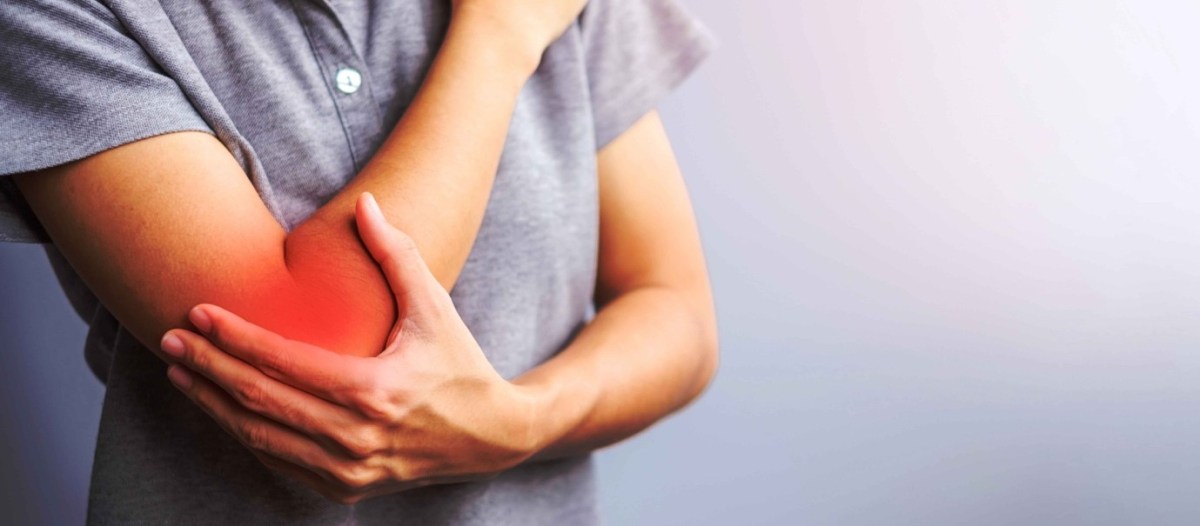
Even if you aren’t playing ‘tennis’.
So, you just turned a doorknob, and that sharp shooting pain feels like its burning, moving right down to your wrist. You experience elbow pain when lifting and gripping anything. You find your grip weakening in lifting that coffee cup or picking up that tennis racquet. Speaking of tennis racquets, you most likely are suffering from a ‘tennis elbow’.
What is a ‘Tennis Elbow’?
Listen to Dr Somshekhar Mallappa, Specialist Orthopaedician at HealthHub Clinics at Al Warqa share his insights about Tennis Elbow.
You may be wondering how you developed a tennis elbow, especially if you’re not a tennis player or even been to a tennis court to knock a few shots! Simply put, a ‘Tennis Elbow’ is a swelling of the tendons (bands of tissue connecting your lower arm muscles to the bone), causing pain and inflammation.
It isn’t rare to find that a lot of people link tennis elbow immediately to playing tennis, but any sport that involves straining the arm and shoulder heavily can also cause it such as baseball, cricket, shot put or golf.
It doesn’t stop there. A serious tennis elbow pain can also develop through activities that involve regular arm movements exhausting your arm muscles such as painting, plumbing, carpentry, knitting or weaving.
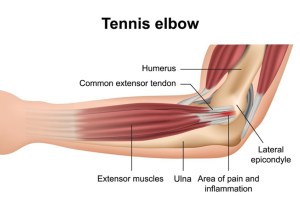
You’re not alone. These 3 celebrities had it too!
The most vulnerable people to tennis elbow are sportspeople and athletes in general. Staying on top of your game is so important, something we touched upon on World Athletics Day. Here are 3 celebrities who faced the challenges of tennis elbow:- Tiger Woods: Back in 2012, Tiger Woods, the world’s champion golfer suffered a strained ‘golfing’ elbow, and despite trying to endure it while preparing for the U.S. Open, had to drop out of it, due to elbow pain.
- Serena Williams: World famous tennis star, Serena Williams, a 21-time Grand Slam singles champion, injured her right elbow during a warm-up session in 2015, and had to pull out of the Swedish Open. After a month of rest, she was back on the court for the rest of the season.
- John Cena: Famous actor and leading wrestler, John Cena, had to pull out of matches in 2012 after he sustained a serious elbow injury as a result of repeated trauma. The injury caused inflammation and pain overtime, with loose chips of bone through within his elbow that had to be removed through tennis elbow surgery.
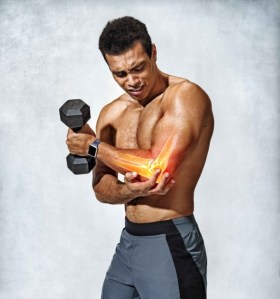
What causes tennis elbow?
Tennis Elbow is largely caused by activities involving repetitive patterns of arm movements that puts too much stress on the muscular tendons which create tears on the tissues. Tennis elbow causes can also cover ‘arm sports’ that include tennis, racquetball, squash, fencing and weightlifting or jobs such as carpentry, weaving, typing, baristas serving cups of coffee and painting.
Age too could be a factor that affects your overall muscular and bone health, but that’s a more general topic to know as shared by Dr. Mohsin Azam our expert Specialist Orthopaedic Surgeon at HealthHub Clinics.
Get to know tennis elbow symptoms:
- Check for pain and tenderness in the bony knob on the outside of your elbow. This knob is where the injured tendons connect to the bone and radiate into the upper or lower arm.
- Pain when you lift a coffee cup or a book.
- Numb pain when making a fist or while gripping an object like a raquet or ball
- Stiff pain when opening a door or shaking hands
- Pain felt when raising your hand or straightening your wrist
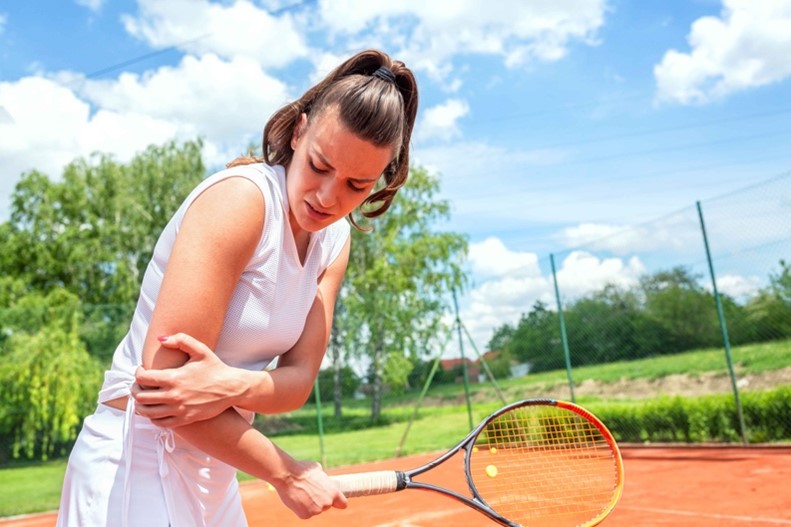
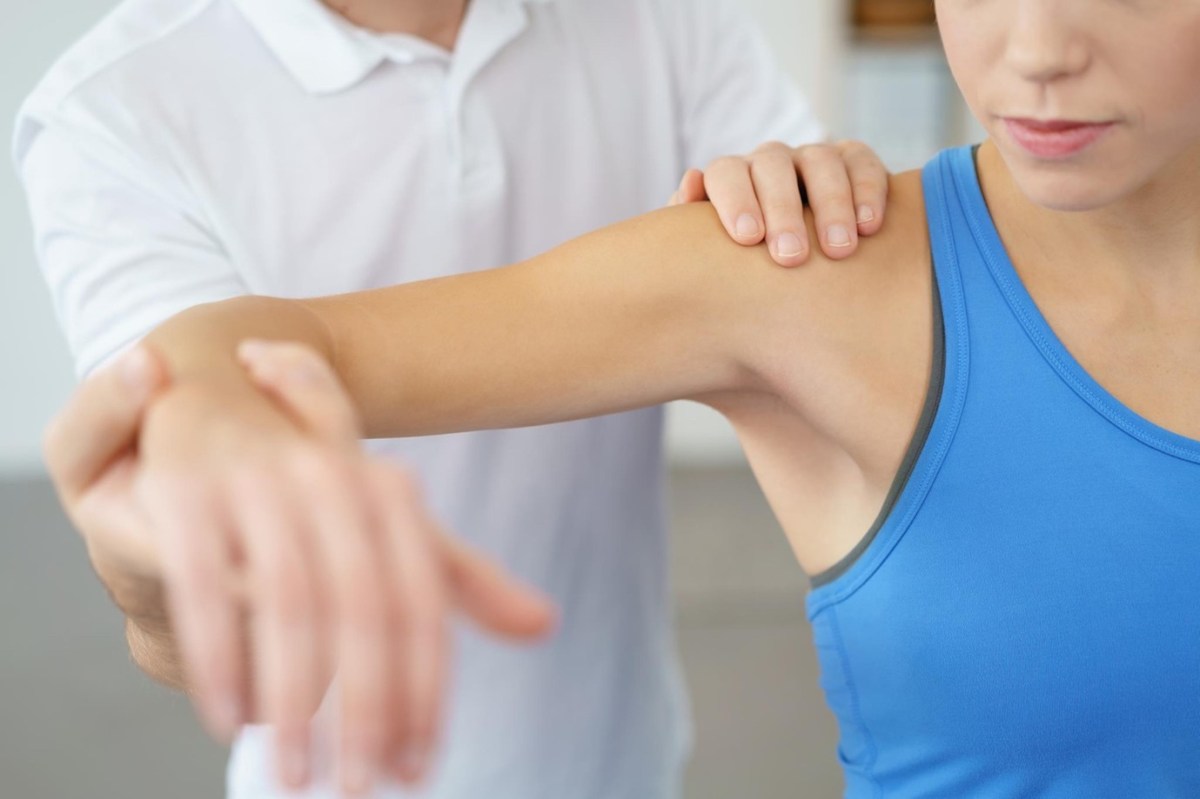
Diagnosing tennis elbow
When it comes to diagnosing tennis elbow your doctor will do a tennis elbow exam and the ‘bending/flex test’, or to check for elbow pain when bending and straightening, where you will be asked to flex your arm, wrist, and elbow to see where it hurts.
You may also need imaging tests, such as an X-ray or MRI (magnetic resonance imaging) to diagnose tennis elbow and then rule out other complications.
How do you treat Tennis Elbow?
The good news about tennis elbow pain treatment is that usually tennis elbow will heal on its own with a great deal of rest. Here are some proven and effective treatments:
- Icing the elbow:This solution can help reduce pain and swelling. Our doctors suggest icing it for at least half an hour, (every 4 hours for up to 3 days) or until the pain subsides. When you apply an ice pack to the painful area for up to 15 minutes, your blood flow to the area is reduced, which in turn decreases your level of pain and swelling, eventually leading you to experience relief.
- Using a tennis elbow strap helps to protect the injured tendon for elbow support from further strain.
- Anti-inflammatory medicines: Taking an aspirin or a pain killer to help with pain and swelling is another approach. However, these drugs can cause side effects, such as bleeding and ulcers, so speaking with any of our orthopaedic doctors at HealthHub Clinics is advised before you even consider this approach.
- Physiotherapy: This method can help strengthen and stretch your muscles and includes customised exercises, massages, and the use of medical devices such as braces and splints, depending on the severity of pain and other factors. It is a safe and tested approach that allows you to apply self-care to your injuries to improve your symptoms and prevent it from recurring.
- Shock wave therapy: Extracorporeal Shock Wave Therapy (ESWT) is a unique way to stimulate soft-tissue healing and inhibition of pain receptors. It is safe, reduces pain and is a proven and efficient healing approach. It’s also referred to simply as electrotherapy for tennis elbow.
- Having injections of steroids or painkillers: It’s important to remember that this is a temporary solution. It can temporarily ease some of the swelling and pain around the joint elbow. Findings show that steroid injections are not a long-term solution.
Exercises that can help overcome Tennis Elbow:
- Ease into the Squeeze! These elbow exercises make use of props, namely: towel, soft ball, a sponge, or a rolled-up sock. The focus here is on squeezing the object repeatedly and then releasing it, so that circulation improves while helping you over time to enhance the strength of your grip.
- Curl that wrist! Keeping your arm extended outward and facing upwards grasp a light weight in your hand, curl your wrist inward and then relax. Part of this drill also involves keeping your arm face-down and bending your wrist upward before relaxing.
- Stretch that finger! Place a rubber band around your thumb and fingers. Spread your fingers apart, then bring them back together. Perform this exercise between 10 to 30 times at regular intervals.
- Twist that wrist! This exercise involves having your knees support your elbow or alternatively on a flat surface, while holding the end of a light weight. Your palm should be face-down, keeping the weight pointed toward the floor. Rotate the weight to bring your palm face-up, then bring it back to the starting position. Remember to perform wrist twists several times.
- Do the Stretch! Keeping your arm extended and your palm facing the floor, use the opposite arm to pull your hand downward while bending the wrist into a stretched position. Stay in this position for 30 seconds. Perform this stretch several times every day.
Recovering from Tennis Elbow
How you heal your tennis elbow pain and get back into your regular lifestyle, depends also on the extent of damage to your tendons. So each case is different, since people therefore heal at different times, depending on the intensity of the damage.
Most importantly, it’s highly advisable to not rush into your tennis elbow recovery and overlook the stages to healing. Overexerting your tendons, while you are in healing, can only backfire and make the damage worse.
Remember to only get back to your activity if it ticks these boxes:
- Gripping an object or withstanding weight on your arm or elbow is no longer painful.
- Both your elbows feel equally strong.
- Your elbow is no longer inflamed or swollen.
- You can easily flex and move your elbow.
Steps to avoid future tennis elbow in Sports:
- Make sure to perform enough warm-up exercises to loosen stiff joints before you begin your game.
- Wondering how to play tennis with a tennis elbow? Watch your swing technique, as a ‘poor swing pattern’ can cause a tennis elbow.
- Never grip your racquet or golf stick too tightly. Changing the size of your racket grip or using double tapes to increase the size of your grip can help.
- Always wear a brace when playing to absorb and minimize impact as it limits your patterns of motion so that you fall into an easy rhythm while playing.
- Sleeping with tennis elbow: If the pain intensifies to the point that it disturbs your sleep, remember to wear a wrist splint while sleeping so that you don’t wake up with sharp wrist pains.
Steps to avoid future tennis elbow at Work:
- Use hand tools equipped with a shock absorber to continue physical work. A shock-absorbing brace worn by can always help
- If possible, replace manual tools with power tools to cut down on impact and strain.
- A temporary transfer to another department (if possible, post your recovery period) where you do not have to flex your elbow as much is always welcome.
To speak with our expert team of orthopaedicians or to book an appointment with the best orthopaedic specialist in Dubai, call HealthHub Clinics today on 8002344 or to know more about the best orthopaedics treatment package in Dubai.









